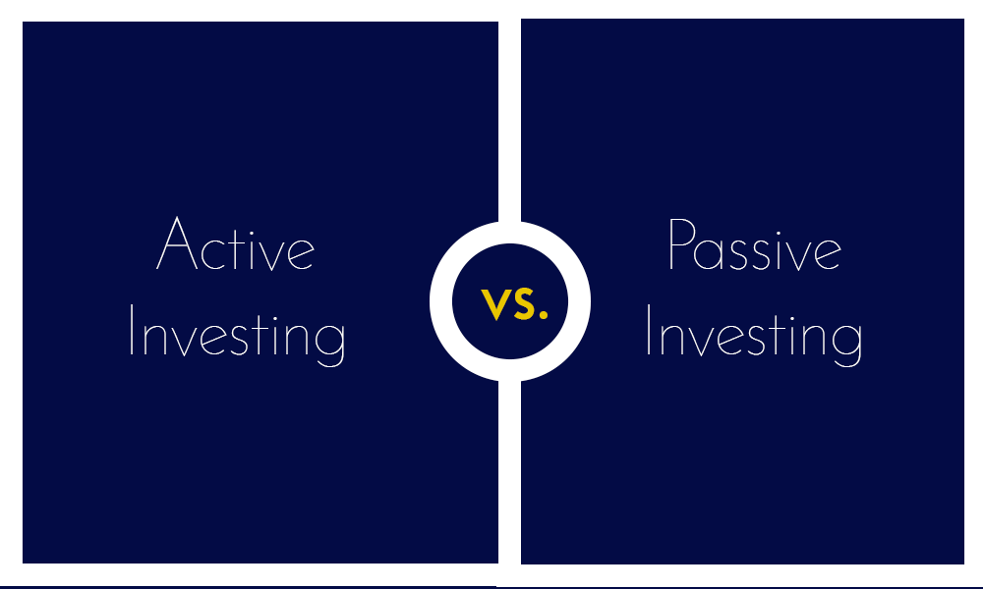
Active VS Passive investing
The truth is that whenever there is a discussion among investors and wealth managers regarding active and passive investing, it can pretty quickly turn into a heated debate because investors and wealth managers tend to strongly favor one strategy over the other. While passive investing is more popular among investors, there are arguments to be made for the benefits of active investing, as well. We have decided to write this article in order to point out the major differences of the two investing approach, so that individual investors can decide which one is more suitable for them.
Active investing
In simple terms active investing, as you can easily understand by its name, is a form of hands-on approach and requires someone to act in the role of a portfolio manager. The main goal of an active investor is to beat the stock market’s average returns and take full advantage of short-term price fluctuations. For example, if you’re an active investor, your goal may be to achieve better returns than the S&P 500.
It involves a much deeper analysis and the expertise to know when to pivot into or out of a particular stock, bond, or any asset. A portfolio manager usually oversees a team of analysts who look at qualitative and quantitative factors, then gaze into their crystal balls to try to determine where and when that price will change.
Moreover, active investing requires confidence that whoever is investing the portfolio will know exactly the right time to buy or sell. Successful active investment management requires being right more often than wrong.
Passive investing
On the other hand, if you’re a passive investor, you invest for the long term. Passive investors limit the amount of buying and selling within their portfolios, making this a very cost-effective way to invest. The strategy requires a buy-and-hold mentality. That means resisting the temptation to react or anticipate the stock market’s every next move.
Because active investing is generally more expensive (you need to pay research analysts and portfolio managers, as well as additional costs due to more frequent trading), many active managers fail to beat the index after accounting for expenses—in those cases, passive investing has typically outperformed because of its lower fees.
The prime example of a passive approach is to buy an index fund that follows one of the major indices like the S&P 500 or Dow Jones Industrial Average (DJIA). Whenever these indices switch up their constituents, the index funds that follow them automatically switch up their holdings by selling the stock that’s leaving and buying the stock that’s becoming part of the index. This is why it’s such a big deal when a company becomes big enough to be included in one of the major indices: It guarantees that the stock will become a core holding in thousands of major funds.
When you own tiny pieces of thousands of stocks, you earn your returns simply by participating in the upward trajectory of corporate profits over time via the overall stock market. Successful passive investors keep their eye on the prize and ignore short-term setbacks—even sharp downturns.

5 differences between active and passive investing
1. The goal of active investing is to beat the market index whereas the goal of passive investing is to get market returns.
2. Active investing is a hands-on approach with frequent buy-sell decisions making most of information flow and price fluctuations whereas passive investing is about researching, buying and holding the investments.
3. Active investing has higher transaction and research-related costs as compared to passive investing.
4. Active investing can also lead to higher capital gains taxation as compared to passive investing.
5. Active investing carries higher risk and potential to generate higher returns as compared to passive investing.
Special Considerations
It is important to mention that only a small percentage of actively-managed mutual funds ever do better than passive index funds.
So which of these strategies makes investors more money? You’d think a professional money manager’s capabilities would trump a basic index fund. But they don’t. If we look at superficial performance results, passive investing works best for most investors. Study after study (over decades) shows disappointing results for the active managers.
All this evidence that passive beats active investing may be oversimplifying something much more complex, however, because active and passive strategies are just two sides of the same coin. Both exist for a reason, and many pros blend these strategies.
A great example is the hedge fund industry. Hedge funds managers are known for their intense sensitivity to the slightest changes in asset prices. Typically hedge funds avoid mainstream investments, yet these same hedge fund managers actually invested about $50 billion in index funds in 2017 according to research firm Symmetric. Ten years ago, hedge funds only held $12 billion in passive funds. Clearly, there are good reasons why even the most aggressive active asset managers opt to use passive investments.
However, reports have suggested that during market upheavals, such as the end of 2019, for example, actively managed Exchange-Traded Funds (ETFs) have performed well. While passive funds still dominate overall, due to lower fees, investors are showing that they’re willing to put up with the higher fees in exchange for the expertise of an active manager to help guide them amid all the volatility or wild market price fluctuations.
Takeaway for investors
For someone who doesn’t have time to research active funds and doesn’t have a financial advisor, passive funds may be a better choice: At least you won’t lag the market, and you won’t pay huge fees. And for investors who are willing to be at least somewhat involved with their investments, passive funds are a low-cost way to get exposure to individual sectors or regions without having to put in the time to research active funds or individual stocks.
But it doesn’t have to be an either-or choice. Some investors have built diversified portfolios by combining active funds they know well with passive funds that invest in areas they don’t know as well.
You should also keep in mind that not all active funds are equal. Some might have lower fees and a better performance track record than their active peers. But remember that great performance over a year or two is no guarantee that the fund will continue to outperform. Instead you may want to look for fund managers who have consistently outperformed over long periods. These managers often continue to outperform throughout their careers.
As always, think about your own financial situation, your life stage, and your ability to tolerate risk before you invest your money.
Stocks fell as traders braced for another supersized US rate hike tomorrow: Everything you need to know
Twitter Sues Elon Musk for Trying to Terminate $44 Billion Deal
Twitter Sues Elon Musk for Trying to Terminate $44 Billion Deal
Twitter Sues Elon Musk for Trying to Terminate $44 Billion Deal
Goldman Sachs Offers Its First Bitcoin-Backed Loan
Goldman Sachs Offers Its First Bitcoin-Backed Loan





